Elisabeth Lebovici: I would like to begin with the title of the exhibition you curated at the Secession in Vienna in summer 2009, as it was what first enticed me to conduct this conversation with you: “The Death of the Audience.” I sense that such a title is in line with much recent research by artists and theoreticians, for instance Hito Steyerl’s essay in the June 2009 issue of e-flux journal, “Is a Museum a Factory?”1 At the end of her essay, she mentions the viewer’s loss of sovereignty in the cinematic machine of the contemporary museum-as-factory; as if the sovereign gaze of the beholder should also be submitted to the division of labor, losing its unity and mastery:
Cinema inside the museum thus calls for a multiple gaze, which is no longer collective, but common, which is incomplete, but in process, which is distracted and singular, but can be edited into various sequences and combinations. This gaze is no longer the gaze of the individual sovereign master, nor, more precisely, of the self-deluded sovereign.
Would you say that the multiple and unified, absent subject designated in the article is similar to the one implied in “The Death of the Audience”?
Pierre Bal-Blanc: Let’s look at the invitation card for the exhibition, which assumes the character of a funeral invitation: “The Death of the Audience,” with a specific date and time: “2.7.2009. 19 Uhr.” The audience is invited to its own funeral. The card thus participates in a ritual, as redefined by Anna Halprin’s movement patterns (Ceremony of Us, 1969) or Michel Journiac’s Messe pour un corps (1969): it performs the audience. But this wasn’t our original title for the exhibition—it came about through the course of the curatorial process. The original working title for the show was “The Professional Outsider.” By using this paradoxical expression, I wished to allude to such self-defining notions of the artist as the “spy” for Gianni Pettena or the “Incidental Person” for John Latham, who are both featured in the show. These notions echo strategies in recent history that cut into institutional practices, movements, or artistic “parties,” strategies that position the artist through specific cognitive means. These artists stand at a distance, they do not intersect with attempts to define oneself as anti-, alter-, or neo-modern; they relate to the idea of being outside and also in-between. To me, relying on these processes and positions was a way of mirroring the rupture that founded Secession at the turn of the twentieth century, but through a marginal and yet positive notion of another rupture in the last quarter of the twentieth century, as well as to maybe further consider the question of what a rupture could be today …
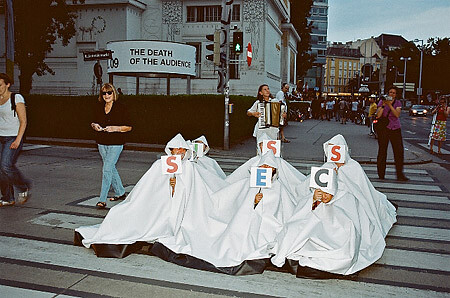

EL: Why ask such a question using the notion of “rupture”? It has such a long history in modernism—I remember being taught an avant-garde history of the twentieth century through Gaston Bachelard’s concept of a “coupure épistémologique” (epistemological break), a concept associated with discontinuity in the history of science, but used in the arts to characterize the succession of practices and movements. “The essence of Modernism lies, as I see it, in the use of characteristic methods of a discipline to criticize the discipline itself, not in order to subvert it but in order to entrench it more firmly in its area of competence,” as Clement Greenberg put it.2 Until this notion fell apart in the postindustrial world. So why “rupture”? And why an exhibition?
PBB: First, let’s say that the show is an answer to an invitation extended by the Secession’s board of artists. I was asked to re-read the history of 1960–1980s art through the Secession, both as a building and a manifesto, a site and an act of insurrection and insubordination against institutional or academic conventions. So the idea was to reactivate the processes of professional marginals such as David Lamelas, Franz Ehhard Walther, Sanja Iveković, Cornelius Cardew, Josef Dabernig, Michel Journiac, Jiří Kovanda, Nicola L., Edward Krasinski, or Bernard Bazile. Indeed, these are all artists who were for the most part left out of the dominant history, and whose work involved a practice of the everyday and a reflection on shared common space, from the intimate to the monumental, albeit in very different ways.
Take André du Colombier for instance, a French artist who is even less well-known than those named above, an incredible character who embodied a kind of late version of Dada from the ‘60s to the ‘80s, but with a very precise and concentrated radicality. He constantly worked with common people, less showing work than giving it, a bit like a neighborhood poet, exchanging a piece of work for a pack of cigarettes, generally using the thread of the rumor, the web of the conversation. He used to call up artists or museum curators and make a work from the conversation. Colombier managed to represent a way of being marginal, of staying on the border of exhibitions even while being well-known by the whole art scene.
EL: He makes me think of Stuart Sherman, who is also being revisited by contemporary critics and artists almost ten years after his death in 2001. During the 1970s—and here I defer to Bérénice Reynaud’s remarkable insights in October—he worked as a kind of theatrical miniaturist, manipulating objects that could fit in a suitcase, contrary to other, grand-scale dramaturgies.3 He was concerned with the transformation of ordinary objects (boxes and blocks, toys and neckties), with stop-action kineticism and visual puns, which he would set in motion on sidewalk corners and city streets during lunch breaks, stretching out a tablecloth and rapidly manipulating the objects in his suitcase with no resolution or punchline. “He would do his work anywhere for almost nothing for an audience of nobody,” as his heir Mark Bradford has said.4 Quickness was his motto, and in his plays and films as well he would “condense” classic texts and writers (Chekov, Brecht, Strindberg) into pieces of no more than a few minutes, recreating Hamlet and presenting a five-minute Faust with a blink-of-an-eye approach that contrasted that of many other recognized experimental artists.
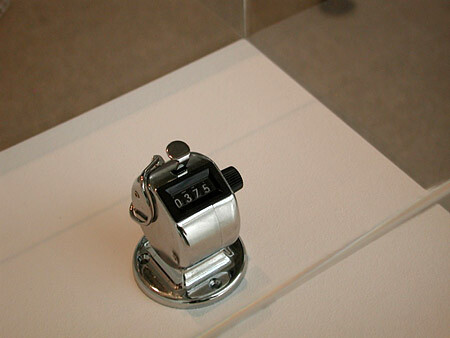

PBB: In being effectively marginalized or in allowing themselves to be marginalized by the art market or art institutions, these artists, from Rasheed Araeen to Goran Trbuljak, have each given priority to a form of art as a critical, concrete, daily practice, which in turn has even further aggravated their “offness” vis-à-vis the art scene. This is another reason for conducting this exhibition project less as a museum show than as an attempt to acknowledge the particulars of this way of situating oneself professionally; for instance in making connections between the show and outside projects, which are indeed quite emblematic: the journal Third Text for Rasheed Araeen, who sees it as both a continuation and a theoretical basis for his artistic projects; Anna Halprin’s workshops at Mountain Home Studio in Kentfield, California; Grzegorz Kowalski’s role as an educator at the Academy of Fine Arts in Warszawa; or Carlo Quartucci and Carla Tatò with Teatr’Arteria in Rome. They all agreed for these projects to become part of the show itself. I’m thinking also of the incredible Isidoro Valcárcel Medina, a Spanish artist who has been very influential for the current generation, from Santiago Sierra to Dora Garcia. He’s totally retired from the professional world of art, and we decided to present a part of his conceptual practice translated into several architectural plans, such as his Museum of the Ruin, the detailed map of a building constructed with self-degrading materials, destined for entropy and disappearance.
EL: Isn’t there a long list of, as you call them, professional marginals connected to every local art scene, appearing in globalized art exhibitions as something like normal exceptions, another oxymoron for an art world always searching for the limits of what can be explored and marketed?
PBB: That’s the whole point of selecting artists for a show. To me, an exhibition means to exclude. Some say that an exhibition is about selecting, about inclusion, but not for me. This principle has enabled me to reassemble the pieces of a history that is not a canonical one. In doing that, I’ve attempted to place our reading of the present into question, as well as our capacity to conceive what our present is made of; like conceptual art, which has edified its legend or its original moment without acknowledging what happened, for instance, at the Instituto Torcuato Di Tella in Buenos Aires, although this experimental space was active in the 1960s and adopted dematerialized practices following the input of Robert Jacoby, Eduardo Costa, Raul Escari, David Lamelas, Roberto Plate, Alfredo Rodriguez Arias, Margarita Paksa, and so forth, and was indeed known by figures such as Lucy Lippard, who visited there in 1968. To account for the present is of course to rethink its genealogy. I have therefore applied the exclusion process to artists who represent avant-garde movements from the 1960s to the 1980s, focusing instead on those who deviated from these movements, as did David Lamelas (with regard to conceptual art), Emilio Prini (to Arte Povera), Rasheed Araeen (to minimalism), Franz Erhard Walter (to performance), Robert Breer or David Medalla (to kinetic art), Gianni Pettena (to Architettura Radicale), Anna Halprin (to postmodern dance), Nicola L. (to feminist art)—those who, voluntarily or not, strayed from the movements through which they would otherwise have defined themselves as professional artists.


I wished to collect all these energies in a single exhibition, a positive exhibition in a place like the Secession that is also emblematic of the modernist ideology. Isn’t the building of the Secession the archetypal White Cube, the first definition of exhibition as environment rather than just paintings on a wall? It could be interesting to watch how this building behaved in its relationship to another critical moment, that of the destabilization of hierarchies and redistribution of roles after modernism.
Secession, the exhibition-making machine, is indeed permanently structured as a grid: orthogonality is the rule. From the first room on, with Rasheed Araeen, Sanja Iveković, and Robert Breer, I introduced many pieces dealing with self-generating compositions and that play with chance, as was often the tendency during the 1960s with John Cage and so forth. But I excluded Cage and took Cornelius Cardew, because the latter was one of the first Europeans not only to grasp the new American aesthetics of Cage or Morton Feldman but to also grasp its social and political implications. Cardew did not want to dictate how the score should be played and was thus uninterested in laying down any rules that might inhibit the performers’ individual interpretations, as in the Scratch Orchestra, which he founded in 1969 with an interest in including “regular” people in the practice of making music. In the 1970s, he would later became engaged in a radical reconsideration of all his work up to that time and adopt a Marxist-Leninist position, embracing the potential of the new opportunities offered by political militancy.5
EL: With Cardew’s constant repositioning of property in music, we are quite easily led to the notion of the “death of the author” as announced by Roland Barthes in the same period. But as we know, the author is less threatened around this time, and what is called into question may be something closer to the “author function” described by Michel Foucault.6 After the crisis of the spectacle (Deleuze and Guattari, Guy Debord), after feminism has called for a gendered questioning of spectatorship and postcolonialism to unveil the power relations of those positions, the “death of the spectator” arrives as a kind of mirror stage of the authorial. Would we do better to talk about an “audience function”? And if the beholder’s function is assumed by a certain type of visual production, defined by institutional uses and practices that can be historicized, why should we then content ourselves with references from the 1970s in order to understand today’s spectacle? Hasn’t the spectacle changed in the globalized world as part of the worldwide development of the branding of institutions and of the machineries of Biennials and international exhibitions?
PBB: This is why the primary title of “The Professional Outsider” seemed overly reductive, too self-reflexive. The exhibition needed a title more suitable to the challenge of the artists’ works, one that would hold the social implications seen in the transformations of the 1960s. Furthermore, what constitutes the main vector of the 1970s more than (in a continuation of Marcel Duchamp) a redistribution of reception? When Barthes writes about “la mort de l’auteur,” it means that the reader is implicated, that the spectator as passive instrument must die and become something else: participant or, as Rancière proposes, “emancipated.”7 Either way, the roles change. To speak about the death of the audience is also to ask whether the death of the author ever occurred.
EL: That’s an important question, the one of failure, especially relating to the post-‘68 years. Don’t you think there is also a vast feeling of delusion associated with the 1970s, a decade “well furnished with historical disappointments and unfinished conflicts,” as Adrian Rifkin has written (about Cardew, in fact), or a feeling that can challenge the melancholy we experience concerning this decade? And how can a show embody these particular feelings or values?
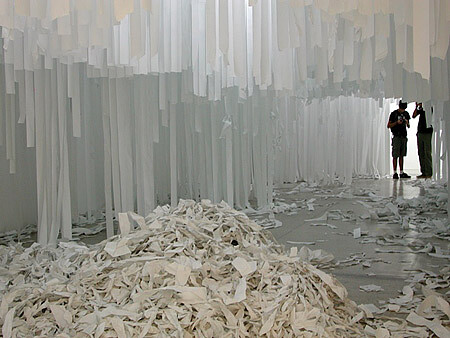

PBB: By showing processes, not finished objects. Processes involve the notion of open form, not self-sufficiency and fulfillment. It’s as simple as a glass of pure water, renewed every day to be drunk (or not), as in Július Koller’s Glass Clean Water (Idea-Object) from 1964, or being invited by Rasheed Araeen to dismantle the structure of Vienna Thirtysix: Zero to Infinity (1968/2009) and rearrange the elements into new formations. By allowing it to be constantly transformed, the work challenges the idea of art as a fixed object of contemplation. Robert Breer proposes a wall that slowly moves, producing renewed spaces for the works and new articulations for the exhibition, through its lateral shift from one side of the room to the other (Moving Wall, 2009). Scraps of paper on the floor, to be picked up and read or not, thrown away or taken away, together form the statement on the state of racism in Austria (Sanja Iveković, 40 Pages of ENAR Report on Racism in Austria, 2009). All these works are articulated on the basis of the author having no more power than the audience, and where those two positions are disenfranchised and equalized with regard to the ordinary eye. And the works can always be unmade—something that I tried to experiment with in another show, “Reversibility,” which I curated for the Frieze Art Fair Gallery in 2008.8
EL: Could we make a detour to know more about this experiment?
PBB: I had asked the artists to “de-create” their works—to together choose one or more of their existing productions and agree on how and when these works should return to the material world (for material assemblages) or the common language (for conceptual works). The artists were also asked to sign a disclaimer that would waive their rights as authors and grant their galleries the right to sell the materials without changing the initial price tag of the works themselves. This would also invert the legibility of their working process—but nobody accepted the proposition! The artists all wanted to keep the work “alive.” Still, I think this is one of the main questions at stake. To Duchamp, who wrote in 1913: “Can one make works that are not ‘of art’?” I would like, with “The Death of the Audience” or “Reversibility,” to respond and further ask: “Can one make art that is not a work?” In the commercial environment in which artworks are identified only through their price tags—through their materialistic value (even if dematerialized)—one should resituate and reposition the processes being engaged. This means to reappropriate use value, which is not considered by consumer society to be a value suitable to art. I wish to reposition these questions by directing them to the audience, the beholder, the spectator, and through what Nietzsche termed “gregarity.” This is what I’m into with “The Death of the Audience”: gregarity. With “Reversibility,” it is more about de-creation as de-divinization.
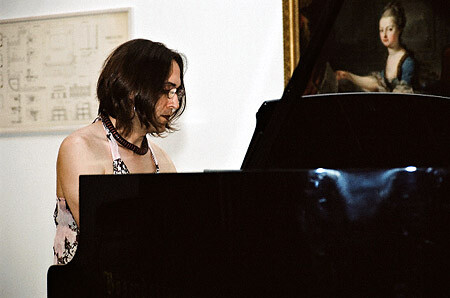

EL: So for you, showing the “continuous project altered daily” of the “art without work,” which is your horizon, produces or reflects a function for a viewer who isn’t fetishistic and wouldn’t be obsessed with exchange value. How do you do that?
PBB: What interests me is the phenomenon of transgression, which defines itself as permanent renewal. There is no stability in transgression—one always has to re-transgress, and this is contained in the artistic process. This is how I can admire, for example, the agency in Bernard Bazile’s rather violent gesture of 1989, opening the can of Merda d’artista by Piero Manzoni. Bazile’s work is a kind of frontispiece in the foyer at the center of the Secession: rather than doing it himself, instead delegating the act to African hands, he also denounces a petit-bourgeois norm of a White artist. With this work Bazile had anticipated the rupture represented by the fall of the Berlin Wall and the advent of globalization, questioning at the same time the taboo of the inviolability of the work of art. Here, one touches on the status of an artwork, but this is not once and forever: this act must be continued, pursued, and contradicted in order to negate a single fixed state and status for the work. The pieces in the show participate in that process of displaying the anarchy of human impulses. For instance there’s the Portrait of Marie Antoinette by Franz Xaver Wagenschön, featured in the first room, which offers a kind of historical perspective by means of a story that isn’t the main narrative. And indeed, this portrait of Marie Antoinette playing an instrument is, in its regular museum room, a mere prop amongst the collection of musical instruments that surround the painting. The choice to show Marie Antoinette is also linked to Bernard Bazile’s piece done in Vienna for Museum in Progress in 1992. In this portrait, Marie Antoinette is still in Austria, figured as a sweet teenager in her baroque attire: her appearance will be transformed, passing the frontier into France, according to the new French neoclassical look. Marie-Antoinette thus represents the passing not only of one look or fashion to another, but also of a style, or rather a mimetic stance. She is painted looking straight at an audience, playing an unknown score: but we all know it by now, it is the one that goes through the Revolution, from monarchy to anarchy, then to republic, later to restoration, a “sweet and violent” narrative. The important thing, here, is to pursue the labor of transgression permanently.
EL: In a way, the show is the opposite of the participatory impulses associated with the art of the 1960s, with kinetic works for instance, or with relational aesthetics in the 1990s, which may be—why not?—the continuation of this participatory movement, a movement also adapted to the enlightened developments of a bourgeois, Western, capitalist culture. But there is a dream of passivity in your proposal; if the walls can slide towards you, why should you move?
PBB: Yes, and that position is counterbalanced: I like those leaps towards passivity, but when they are succeeded by activity. It’s a rhythm, everything is in that rhythm. Interactivity is like industrial domination, a falsely active activity. Like Žižek, so do I prefer its uncanny double, the term “interpassivity.”9 On the one hand, we have the emancipated spectatorship of Rancière; on the other there is Žižek’s interpassivity, a situation in which the object itself takes from you and enjoys for you. And for me there is also Pierre Klossowski, who unites these two theories in his analysis of perversion and transgression.
EL: Pierre Klossowski, whose large drawings you have also exhibited, seems to be a main reference for you in all your previous shows. What have his poetic and philosophic essays brought to you?
PBB: First I want to “de-gentrify” (“désambourgeoiser”) Klossowski, to take him out of his intellectual ghetto, in a kind of inverse way compared to other artists in the show, whom I have tended to import into the art scene, and who have by and large been marginalized with respect to the intellectual frameworks. What Klossowski produces is a praxis, a relation between practical and theoretical means. La monnaie vivante (The Living Currency) is a fundamental book of the 1970s, a missing link for the whole of the twentieth century and especially for French theory, from Bataille to Baudrillard, Lacan to Foucault and Deleuze.10 All have read him and make it clear that they have done so. Curiously, it hasn’t been translated into English. I have since 2005 been running an ongoing project devoted to this text, also called “La monnaie vivante.”11
The book’s introduction posits very simply the initial perversion as the first manifestation in a human being of the distinction between reproductive instincts and voluptuous emotion. This first perversion distinguishes human from mechanism, and will later be found to be the definition of human thought. Then, ideology appropriates perversion as “false or foul thinking”—the industrial and capitalist system, in organizing the production processes towards specific and policed ends, closes them down in the same gesture as it expels everything that overruns for being perverse. For example, a tool is used for doing only one thing. It is perverse to exceed, to overrun. This is the limitation at the foundation of the capitalist division of labor. Thus the drive behind the “open form” or the “open work” becomes to explode and dismiss these limits, to multiply possibility. These practices, so typical of the 1970s, work to invert or reverse the industrial system, which borders on perversion, instrumentalizing it. One can also go back to Charles Fourier, as I did at CAC Brétigny with “The Phalanstère Project,” who tried to offer a theory of impulses be distributed in another organism, taking into account their necessary variety, hence the subject of this show.12 For instance, Nicola L. explodes the conventional use of furniture with her Femme Commode (1969), which is not only a chest of drawers, but constitutes another articulation that “inverts” a feminist position by treating alienation as its ultimate fantasy …
It interests me to locate—as many artists do—places or sites capable of performing transgression, de-creation, and inversion. “Inversion” is also an important word for homosexuals, as in Havelock Ellis’ Sexual inversion.13 “Les invertis/Inverts” is also the working title of one of my future shows on contemporary artistic practice. So a lot of personal feelings come back to inform your own work as you find them reflected in artistic or creative processes that explode a conditioned reality. I’m thinking for instance of the Cluster works by John Latham, a “Deleuzian” artist who inverts the value of reading by showing only links and energies: his conglomerated books hanging from above are like balls of energy. I’m referring also to the system Edward Krasiński worked out: a blue line inscribed in the space of a relief painting that continues into the space of the audience—the remaining space, if you like—and acts like a line of tension between two environments.
EL: So let’s go back to the primary question. Why an exhibition? What does it mean for you?
PBB: That’s an important question for me, because it constitutes a specific field of knowledge with precise rules that respond to the question of how to situate a discourse in space—of course, also in duration, but first in space. I know that time has become a fashionable subject for shows nowadays, but when David Lamelas is asked how he envisages time (since he was involved in his “Time as Activity” projects in the 1970s), he always responded by saying that time doesn’t exist for him, that he lives in space. Time is a measure, and space offers a kind of direct perception that reaches the body and all senses. I do not wish to develop a thesis that will be more interesting in a text or a catalogue; I invest everything in the show itself, primarily in the space. I could characterize this situation as the concept of the “third work,” in which the operation of selecting two different works from two distinct artists produces a third, ephemeral and immaterial; the third work generated by two others, in relation, in duality, or in distortion and disavowal …
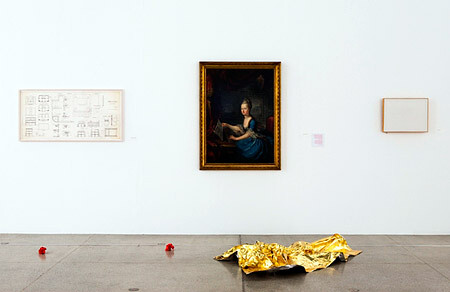

EL: A vastly popular field now in art history, which has taken over from the history of contemporary practices, is the history of exhibitions. Which exhibitions would be historical references for you?
PBB: Offhand, rather than exhibitions per se, I think of artistic acts shown in public—not only autonomous works, but works that include the modalities of their enactment. I’m thinking about Michael Asher relocating Jean-Antoine Houdon’s statue of George Washington from the main entrance of the Art Institute in Chicago to an eighteenth-century gallery inside of the museum. For me, this is a fundamental act that has always been a guide, this violent displacement of a sculpture, removed from its pedestal and placed in a room, positioning it within a network of stylistic connections rather than as a political emblem.
EL: You usually like to be polemical. Indeed, even in the press release for “The Death of the Audience,” you placed your show in line with the 2009 Istanbul Biennial and against the Venice Biennale, the Biennale in Lyon, or the Tate Triennial: neither “Making Worlds,” nor “the Spectacle of the Everyday,” nor “Altermodern”…
PBB: It’s not out of disrespect, but about challenging a figure of the artist that seems too academic to me: as exception and exceptional, the one who brings solutions. I’m very suspicious about that type of proposal and am wondering lately whether the curator isn’t instrumentalizing this artistic figure to position him or herself first, but under the guise of serving the artist. Of course it’s a bit too easy to hide behind the domination and exploitation of artists in authoritarian events such as biennials, but at the same time we can clearly see that the figure of the artist-hero is no longer current, but is rather a historicist view that tries to cling to the branches of the avant-garde. Similarly, in the context of the over-institutionalized Tate Triennial, “Altermodern” works like a parody of the work of the great critics of the twentieth century, up to Pierre Restany or Germano Celant, trying to create a movement. It’s still about trying to create a party, a power position, an adhesion, contrary even to how artists themselves work. Rather than oversimplify the role of the artist, it might make more sense to look outside this figure to a form of organization to be presented or prolonged, one in which the community is involved, where not only the artist but the audience provides a disseminated, deterritorialized experience for the exhibition.
Maybe art and exhibition processes are not much more than a protest march, like those that Bazile experienced and documented since the 1990s, a continuous anarchy of impulses: “NON! NON! NON!” “OUI! OUI! OUI!”
Hito Steyerl, “Is a Museum a Factory?” e-flux journal, no.7 (June 2009).
Clement Greenberg, “Modernist Painting,” Arts Yearbook 4 (1961): 103-108.
Bérénice Reynaud, “Stuart Sherman: Object Ritual,” trans. Thomas Repensek, October 8 (Spring 1979): 58-74.
See →.
See →.
See Michel Foucault, “What is an Author?,” trans. Donald F. Bouchard and Sherry Simon, in Language, Counter-Memory, Practice. (Ithaca, New York: Cornell University Press, 1977), 124-127.
See Jacques Rancière, “The Emancipated Spectator,” Artforum (March 2007): 271-80.
See →.
Slavoj Žižek, “The Interpassive Subject: Lacan Turns a Prayer Wheel,” in How to Read Lacan (New York: W.W. Norton & Company, 2006), 23.
Pierre Klossowski, La monnaie vivante (Paris: E. Losfeld, 1970).
See →.
See →.
See Havelock Ellis, Sexual inversion (Philadelphia: F.A. Davis Co., 1901).
Category
Subject
An extended version of this interview will be published in the Secession catalogue The Death of the Audience in spring 2010.
